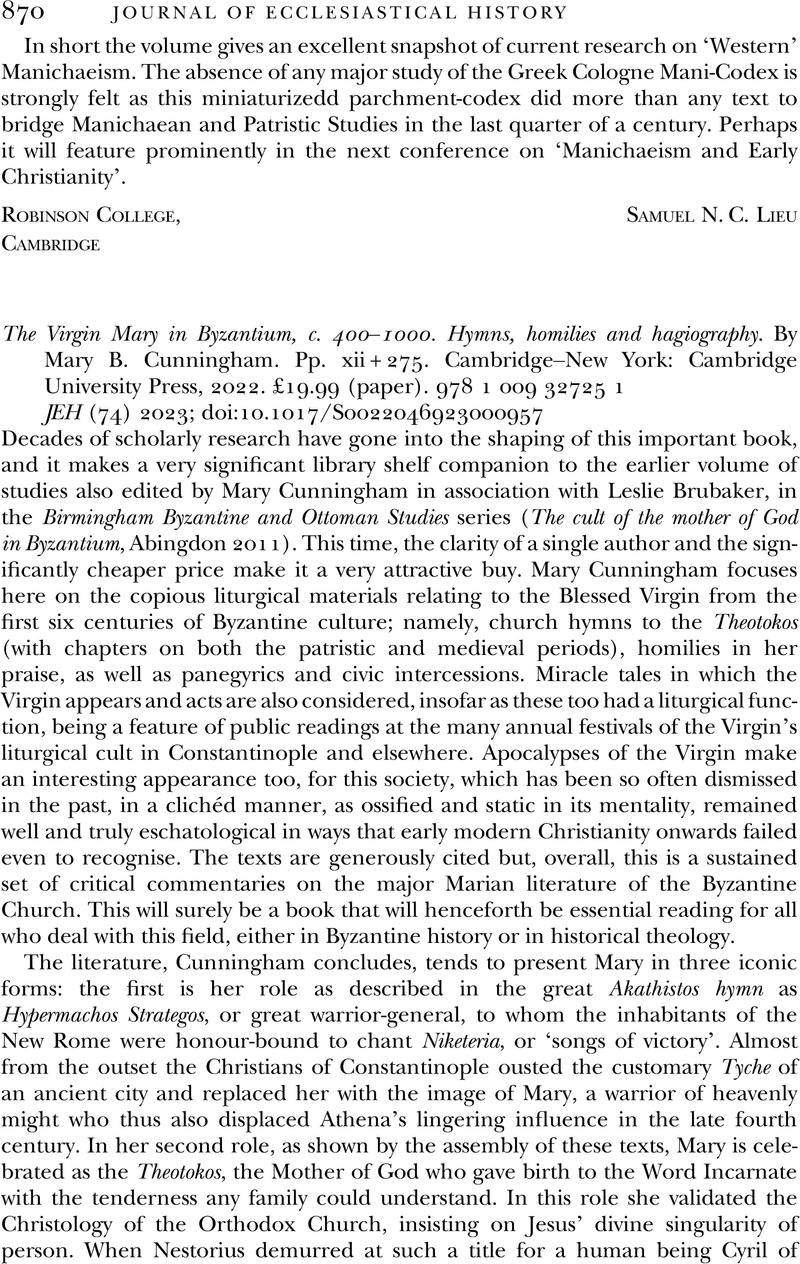No CrossRef data available.
Article contents
The Virgin Mary in Byzantium, c. 400–1000. Hymns, homilies and hagiography. By Mary B. Cunningham. Pp. xii + 275. Cambridge–New York: Cambridge University Press, 2022. £19.99 (paper). 978 1 009 32725 1
Review products
The Virgin Mary in Byzantium, c. 400–1000. Hymns, homilies and hagiography. By Mary B. Cunningham. Pp. xii + 275. Cambridge–New York: Cambridge University Press, 2022. £19.99 (paper). 978 1 009 32725 1
Published online by Cambridge University Press: 04 October 2023
Abstract
An abstract is not available for this content so a preview has been provided. Please use the Get access link above for information on how to access this content.

- Type
- Reviews
- Information
- Copyright
- Copyright © Cambridge University Press 2023



